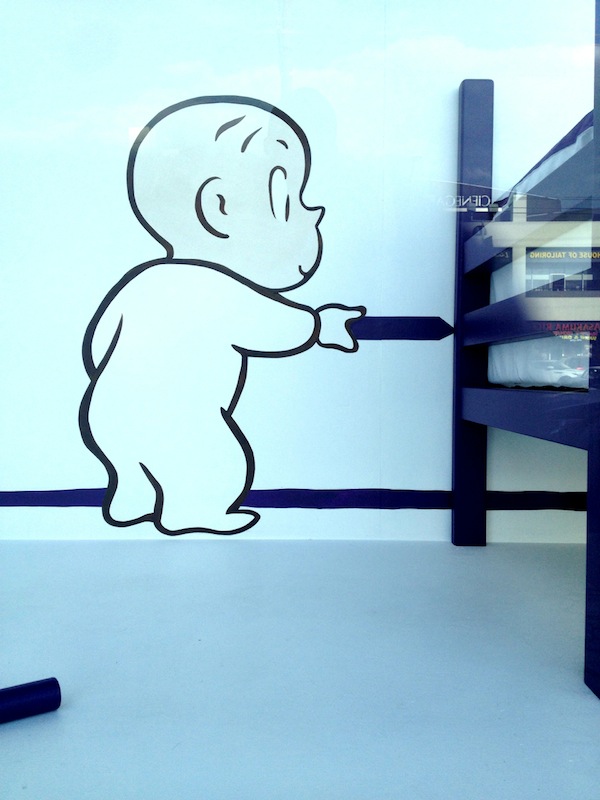Crockett Johnson‘s Harold appears in Madeline Stuart‘s window design for Compas, as one of the “Novel Displays: Storytelling by Design” windows at La Cinega Design Quarters‘ “Legends” event (May 7-9, Los Angeles). Surprising no one, I always enjoy reports of Harold sightings.
The addition of three crayons behind Harold departs from Johnson’s book, but their presence helps viewers recognize that Harold holds a crayon in his hand, and is drawing his bed. Though there’s no bedroom door in Harold and the Purple Crayon (1955), the presence of a door here may well be a nod to A Picture for Harold’s Room (1960), at the end of which our protagonist draws the door to his bedroom. Alluding to that book is an apt choice since it’s the Harold story that is most explicitly about art. His decision to draw a picture for (and on) his wall launches the story, and the vanishing point is a major plot point. It’s also pleasantly and appropriately metatextual for a Harold display to refer to the concluding pages of two Harold books.
Courtesy of the Quintessence blog, here’s a close-up of Harold himself:
More Harold posts on Nine Kinds of Pie (this blog):
- The Purple Crayon’s Legacy, Part I: Comics & Cartoons (13 Sept. 2010)
- The Purple Crayon’s Legacy, Part II: Picture Books (23 June 2013)
- A Manifesto for Children’s Literature; or, Reading Harold as a Teenager (4 April 2013). A revised and expanded version of this piece will appear in The Iowa Review, later this year.
- Harold and the Purple TARDIS (2 April 2012)
- Harold and the School Mural (22 Jan. 2012). This appears at the Ben Franklin School, in Norwalk, Connecticut.
- Nine Kinds of Pie (14 Mar. 2014)
- More Metafiction for Children (4 Sept. 2010)


